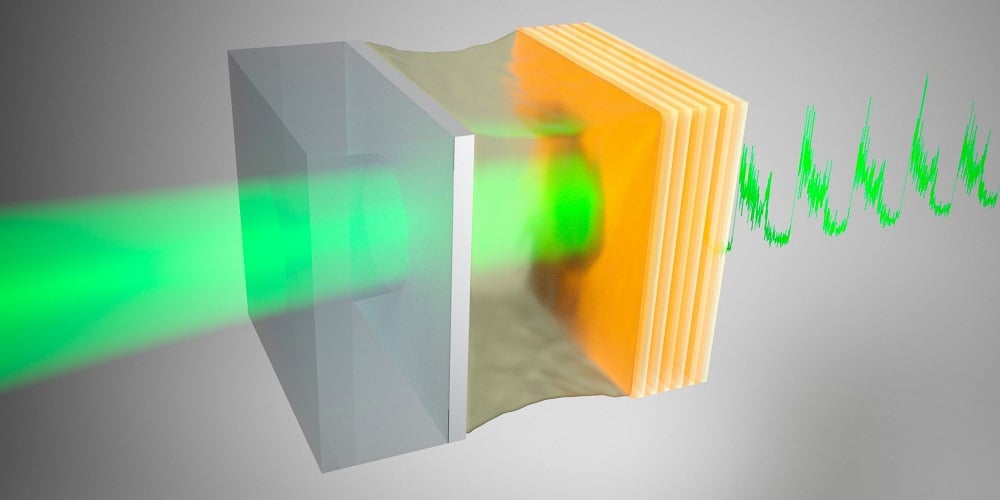AMSTERDAM, June 3, 2021 — A laser experiment conducted by scientists at AMOLF (part of the Netherlands Organisation for Scientific Research) has enhanced understanding of the role of memory in stochastic resonance.
Stochastic resonance describes the phenomenon in which a signal is amplified with an optimum amount of noise; to explain it in an analogy, consider a task that requires a great deal of attention. The task may be more difficult when there is a loud conversation nearby. However with complete silence, it may also be difficult to concentrate. Many find that a particular level of noise — whether the hum of a fan or the muffled sound of people chatting on the street — allows them to concentrate more effectively.
“This is the human equivalent of stochastic resonance,” said AMOLF group leader Said Rodriguez. “In our scientific labs, stochastic resonance happens in nonlinear systems that are bistable. This means that, for a given input, the output can switch between two possible values. When the input is a periodic signal, the response of a nonlinear system can be amplified by an optimum amount of noise using the stochastic resonance condition.”
Stochastic resonance was proposed as an explanation for climate cycles in the 1980s. Scientists noticed a pattern in fluctuations of global average temperatures that indicated that climate may be a bistable system switching between two temperature states. Whether stochastic resonance is actually responsible for this effect is still up for debate, though the theory led to a number of research efforts to determine whether similar effects could be observed in other systems.

Two mirrors with a drop of oil in between form a nonlinear optical cavity, in which stochastic resonance was observed. By modulating the position on one of the mirrors, the laser light (approaching from the left) is turned into a signal (right). An optimum amount of noise amplifies this signal when the conditions of stochastic resonance have been met. Courtesy of AMOLF.
“Theory suggests that stochastic resonance can only occur at a very specific signal frequency. However, many noise-embracing systems exist in environments where signal frequencies fluctuate," Rodriguez said. “For example, it has been shown that certain fish prey on plankton by detecting a signal they emit, and that an optimum amount of noise enhances the fish’s ability to detect that signal through the phenomenon of stochastic resonance. But how can this effect survive fluctuations in the signal frequency?”
Rodriguez and Ph.D. student Kevin Peters determined that memory effects need to be taken into account. Memory in this context means that the future depends on previous history, Rodriguez told Photonics Media. “Perhaps the simplest way to understand memory effects is in the context of temperature changes. For instance, when you set the temperature of your living room to a certain value, the temperature of the room does not change immediately.”
Although the theory of stochastic resonance assumes that nonlinear systems respond instantaneously to an input signal, most systems respond to their environment with a delay, and their response depends on all that happened before.
For their experiments, the team added a controlled amount of noise to a beam of laser light, and directed the beam to a tiny cavity filled with oil, which is a nonlinear system.
“Part of that light is absorbed by the oil. The oil heats up, but not instantaneously,” Rodriguez said. “It takes about 10 microseconds for the oil’s temperature to rise to a steady-state.”
Experiments showed that stochastic resonance is able to occur over a broad range of signal frequencies when memory effects are present.
“This required writing new (more complex) equations, performing new experiments, etc. And in the end, we found something new that we would have never found if we would have made the same assumption everyone else makes: Systems respond instantaneously,” Rodriguez told Photonics Media.
The work was published in Physical Review Letters (www.doi.org/10.1103/PhysRevLett.126.213901).